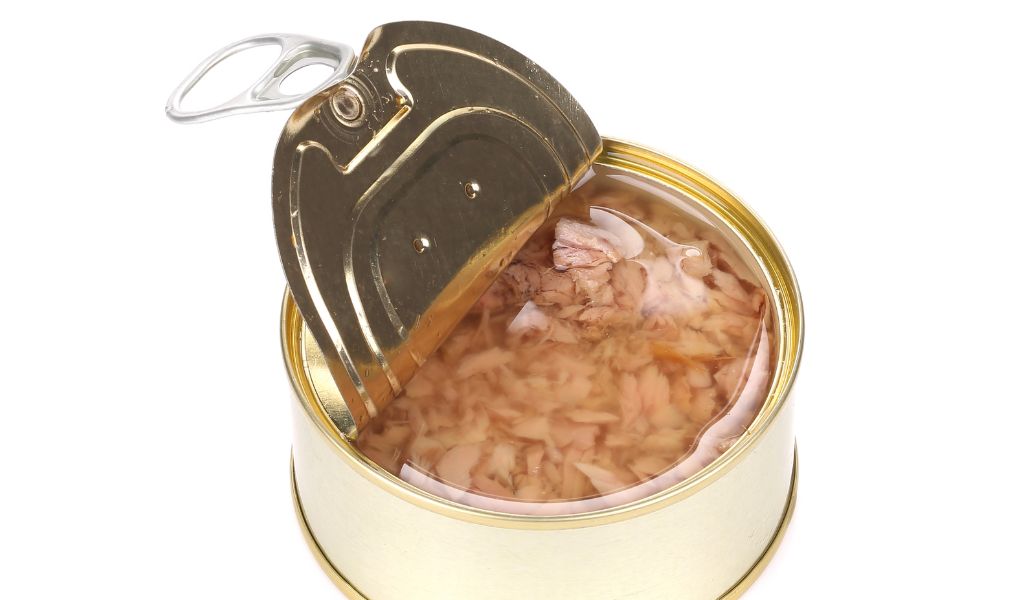As pet owners, we always strive to provide our furry friends with a balanced and nutritious diet.
However, it’s not uncommon to want to add a little variety to their meals to keep them interested and happy.
One common question that arises is whether we can mix dry dog food with tuna.
In this article, we will discuss the pros and cons of mixing tuna with dog food, as well as some safety measures you need to consider.
Dry dog food can be mixed with tuna fish as long as you take some precautions about the type of tuna that you use and don’t feed it too often or feed too much. Dogs enjoy tuna and it can make a healthy addition to your dog’s diet.
Pros of mixing dry dog food with tuna
Tuna is a great source of protein: Tuna is a high-quality protein source that can benefit your dog’s overall health.
It contains all the essential amino acids that dogs need to maintain their muscle mass, support their immune system, and promote healthy skin and coat.
Tuna is rich in omega-3 fatty acids: Omega-3 fatty acids are essential for your dog’s brain and heart health.
They can also reduce inflammation, which can benefit dogs with joint problems or skin allergies.
Adds variety to your dog’s diet: Mixing tuna with dry dog food can provide your dog with a different texture and taste, which can keep them interested and happy.
Cons of mixing dry dog food with tuna
Mercury levels in tuna: Tuna can contain high levels of mercury, which can be toxic to dogs.
Feeding your dog too much tuna can lead to mercury poisoning, which can cause symptoms such as vomiting, diarrhea, and in severe cases, neurological damage.
Can upset your dog’s stomach: Some dogs have sensitive stomachs and may not tolerate new foods well.
Mixing dry dog food with tuna can cause gastrointestinal upset, such as vomiting or diarrhea.
Nutritional imbalance: Dry dog food is formulated to provide all the essential nutrients that dogs need to thrive.
Adding tuna to their diet can disrupt this balance and lead to nutritional deficiencies or excesses.
Safety measures when mixing dry dog food with tuna
Limit tuna intake: If you decide to mix tuna with dry dog food, it’s important to limit your dog’s intake.
As a general rule, tuna should not make up more than 10% of your dog’s diet. You should also choose low-mercury tuna, such as skipjack or light tuna.
Check with your vet: Before introducing any new food to your dog’s diet, it’s essential to consult with your veterinarian.
They can assess your dog’s health and make recommendations based on their individual needs.
Introduce gradually: If your dog has never had tuna before, you should introduce it gradually to avoid gastrointestinal upset.
Start with a small amount and increase it over time while monitoring for any adverse reactions.
FAQs:
Q: Can I mix canned tuna with dry dog food?
A: Yes, you can mix canned tuna with dry dog food, but you should choose low-mercury options and limit your dog’s intake.
Q: Can dogs eat tuna every day?
A: No, dogs should not eat tuna every day due to its high mercury levels. Tuna should make up no more than 10% of your dog’s diet.
Q: What kind of tuna is safe for dogs?
A: Low-mercury tuna, such as skipjack or light tuna, is safe for dogs in moderation.
Conclusion and final thoughts
In conclusion, can you mix dry dog food with tuna? Yes, you can, but you need to be mindful of the potential risks and take safety measures to ensure your dog stays healthy and happy.
Tuna can be a great source of protein and omega-3 fatty acids for your dog, but it can also cause mercury poisoning, gastrointestinal upset, and nutritional imbalances if not fed in moderation.
Therefore, it’s important to limit your dog’s intake, choose low-mercury options, and consult with your veterinarian before making any changes to their diet.
Remember, while adding variety to your dog’s diet can be tempting, it’s crucial to prioritize their health and well-being.
With the right precautions and attention, you can mix dry dog food with tuna safely and give your furry friend a nutritious and enjoyable meal.




